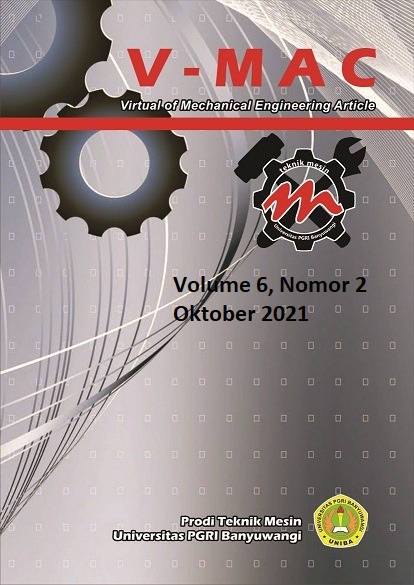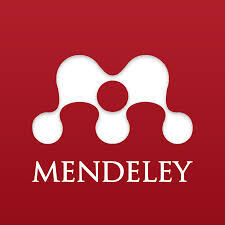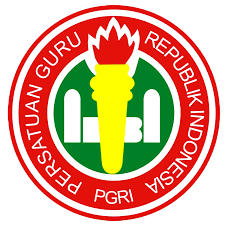Pengaruh Variasi Kekasaran Lubang Nozzle Dengan Campuran Bahan Bakar Pertalite dan Spiritus Terhadap Karakteristik Nyala Api
DOI:
https://doi.org/10.36526/v-mac.v6i2.1518Abstract
The nozzle is a fluid flow spraying device to increase the velocity of the outflow. Differences in the
nozzle holes can affect the flow of fluid that comes out. The purpose of the study was to determine the
effect of variations in nozzle hole roughness with a mixture of pertalite and spiritus fuels on the
characteristics of the flame. In this research, experimentally using Nozzle Cutting Tip LPG M.02 with a
given treatment of threading roughness in the nozzle hole with a thread spacing of 0.5mm, 1mm, and
without treatment (Standard) while the fuel used is a mixture of Pertalite and Pertalite fuels. spirit with
a mixture of (75ml:75ml), (100ml:50ml), and (125ml:25ml), data collection includes the rate of fuel
consumption for 3 minutes, the temperature of the fire includes (bottom, middle, top fire) with a
distance of each measurement 20cm, height fire, cross-sectional area of fire and area based on the
color of the fire which is then to determine the characteristics of the fire produced in each variation
used. The results showed that the treatment of roughness of threading at the nozzle hole and the mixing
of fuel between Pertalite and Spiritus had an effect on the characteristics of the flame, where the
highest change in fire characteristics was in the variation of the 1mm threaded nozzle hole with the
percentage of the fuel mixture 125ml:25ml with an air flow pressure of 0.5 LPM. . It has a fuel
consumption rate of 9 ml/minute, fire temperature (below 776
o
C, middle 717
o
C, above 617
o
C), flame
height is 73.21cm, and blue flame area is 31.22cm2.
Keywords: Nozzle, Pertalite, Spiritus, Fire Characteristics
Downloads
Published
How to Cite
Issue
Section
License
uthors who publish with this journal agree to the following terms:
1. Copyright on any article is retained by the author(s).
2. The author grants the journal, the right of first publication with the work simultaneously licensed under a Creative Commons Attribution License that allows others to share the work with an acknowledgment of the work’s authorship and initial publication in this journal.
3. Authors are able to enter into separate, additional contractual arrangements for the non-exclusive distribution of the journal’s published version of the work (e.g., post it to an institutional repository or publish it in a book), with an acknowledgment of its initial publication in this journal.
4. Authors are permitted and encouraged to post their work online (e.g., in institutional repositories or on their website) prior to and during the submission process, as it can lead to productive exchanges, as well as earlier and greater citation of published work.
5. The article and any associated published material is distributed under the Commons Attribution 4.0 International License.





















